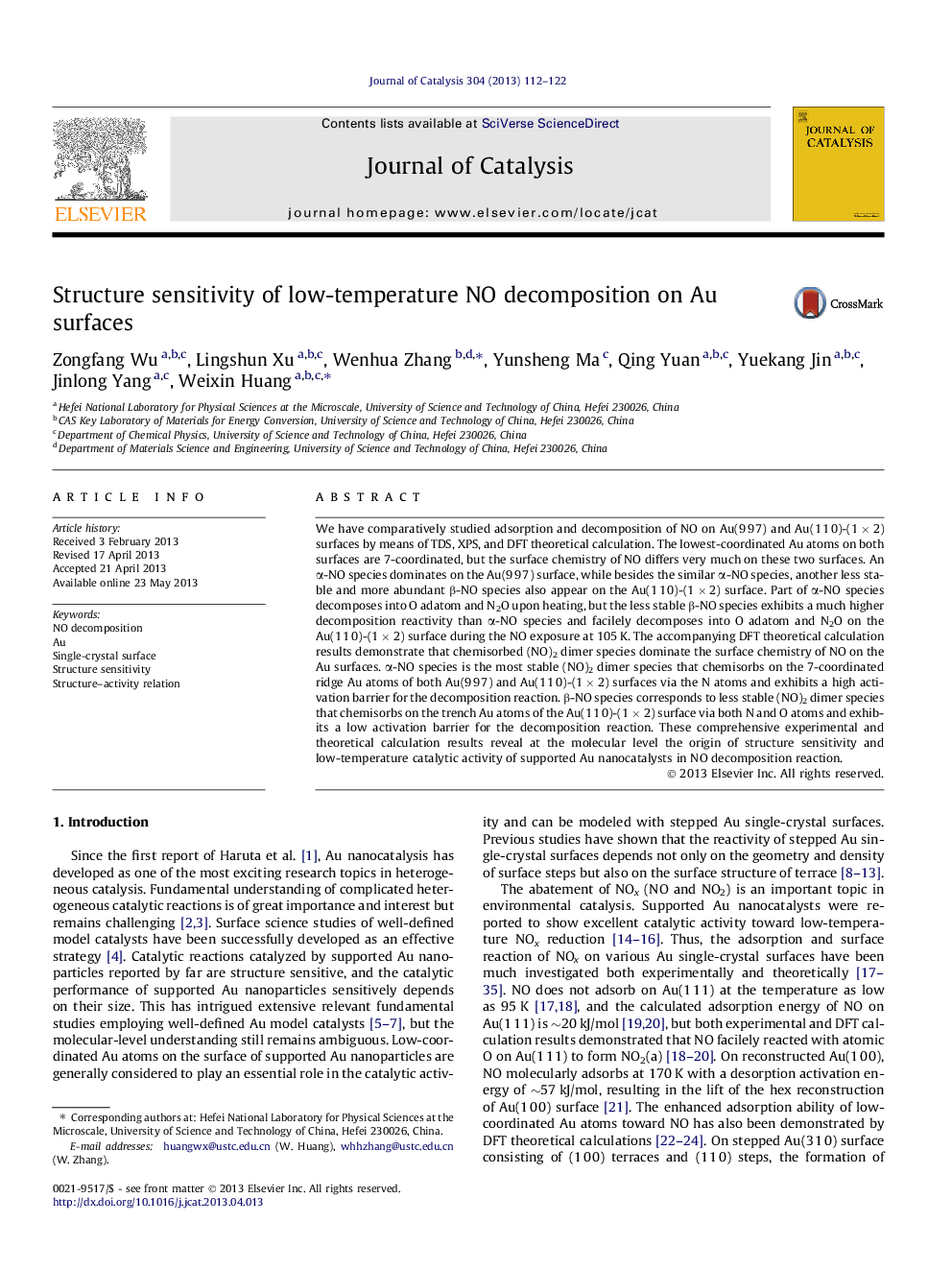| Article ID | Journal | Published Year | Pages | File Type |
|---|---|---|---|---|
| 61228 | Journal of Catalysis | 2013 | 11 Pages |
•Au surfaces are active in catalyzing low-temperature NO decomposition.•Low-temperature decomposition of NO on Au surfaces is structure sensitive.•(NO)2 dimer dominates the low-temperature decomposition of NO on Au surfaces.•The decomposition activity of (NO)2 on Au surfaces is opposite to its adsorption energy.•The origin of high activity of Au surfaces in catalyzing low-temperature NO decomposition is revealed.
We have comparatively studied adsorption and decomposition of NO on Au(9 9 7) and Au(1 1 0)-(1 × 2) surfaces by means of TDS, XPS, and DFT theoretical calculation. The lowest-coordinated Au atoms on both surfaces are 7-coordinated, but the surface chemistry of NO differs very much on these two surfaces. An α-NO species dominates on the Au(9 9 7) surface, while besides the similar α-NO species, another less stable and more abundant β-NO species also appear on the Au(1 1 0)-(1 × 2) surface. Part of α-NO species decomposes into O adatom and N2O upon heating, but the less stable β-NO species exhibits a much higher decomposition reactivity than α-NO species and facilely decomposes into O adatom and N2O on the Au(1 1 0)-(1 × 2) surface during the NO exposure at 105 K. The accompanying DFT theoretical calculation results demonstrate that chemisorbed (NO)2 dimer species dominate the surface chemistry of NO on the Au surfaces. α-NO species is the most stable (NO)2 dimer species that chemisorbs on the 7-coordinated ridge Au atoms of both Au(9 9 7) and Au(1 1 0)-(1 × 2) surfaces via the N atoms and exhibits a high activation barrier for the decomposition reaction. β-NO species corresponds to less stable (NO)2 dimer species that chemisorbs on the trench Au atoms of the Au(1 1 0)-(1 × 2) surface via both N and O atoms and exhibits a low activation barrier for the decomposition reaction. These comprehensive experimental and theoretical calculation results reveal at the molecular level the origin of structure sensitivity and low-temperature catalytic activity of supported Au nanocatalysts in NO decomposition reaction.
Graphical abstractChemisorbed (NO)2 species are the active surface species for low-temperature NO decomposition into N2O on Au surfaces and their decomposition reactivities vary in a trend contrast to their adsorption energies.Figure optionsDownload full-size imageDownload high-quality image (196 K)Download as PowerPoint slide
